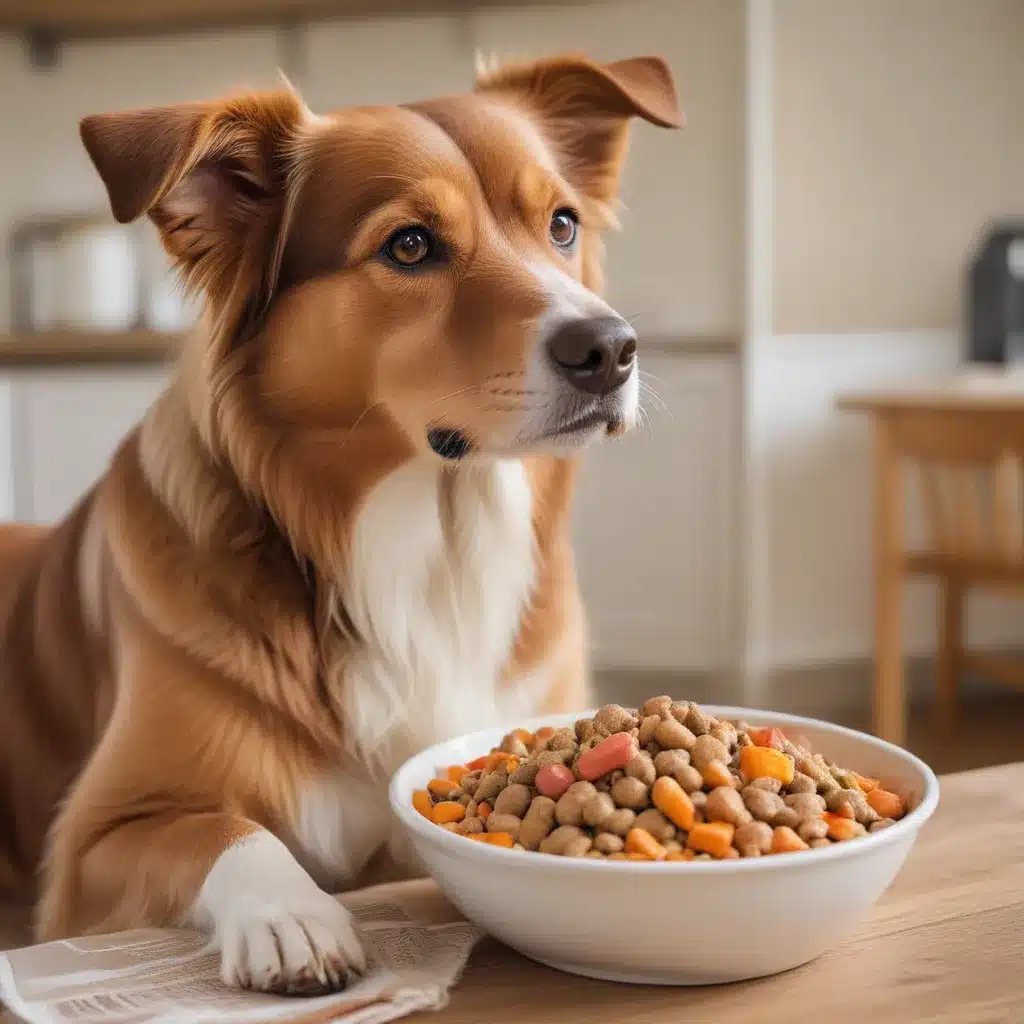
The Shocking Truth About Dog Food Ingredient Lists
As a proud pup parent, I’ll admit that I used to think reading dog food ingredient lists was about as exciting as watching paint dry. I mean, who really cares about those cryptic lists of ingredients, right? Turns out, I was totally wrong.
After my golden retriever, Max, had a few tummy troubles, I decided to take a closer look at what was actually going into his food. Boy, was I in for a rude awakening. Turns out, a lot of those “premium” dog food brands are filled with all sorts of sketchy ingredients that can cause all kinds of problems for our four-legged friends.
That’s when I became determined to learn how to read those pesky dog food ingredient lists like a pro. And let me tell you, it was a total game-changer. Not only did I start choosing way healthier foods for Max, but I also discovered some real hidden gems that he absolutely loves.
So if you’re ready to take your dog’s nutrition to the next level, keep reading. I’m about to spill all my secrets on how to master those ingredient lists and make sure your furry bestie is getting only the good stuff.
Ingredients 101: Breaking Down the Basics
Alright, let’s start with the basics. When you’re staring down that dizzying list of ingredients on the back of a dog food bag, the first thing you need to know is that the items are listed in order of quantity. That means the ingredient that makes up the largest portion of the food is listed first, with the rest following in descending order.
This is crucial information because it can tell you a lot about the overall quality and nutritional value of the food. For example, if the first ingredient is some kind of meat or meat meal, that’s a good sign. But if the first few ingredients are things like corn, wheat, or soy, that’s a red flag that the food is probably heavy on cheap fillers and light on the good stuff.
Another important thing to look for is the quality of the protein sources. While things like “chicken” or “beef” are great, you’ll also see more vague terms like “meat and bone meal” or “animal digest.” These are usually lower-quality protein sources that you’ll want to avoid.
Oh, and don’t even get me started on all the weird-sounding preservatives, additives, and artificial colors that can sneak their way into dog food. Some of those things can be downright dangerous for our furry friends.
Cracking the Code: Deciphering Tricky Ingredients
Now that you’ve got the basics down, let’s dive a little deeper into some of the more confusing and concerning ingredients you might find on a dog food label.
One that always catches my eye is “by-products.” These are basically the leftover parts of the animal that aren’t considered prime cuts of meat. Things like organs, bones, and even beaks and feet can all fall under the “by-product” umbrella. While not inherently bad, by-products are generally lower in quality and nutritional value than whole muscle meats.
Another sketchy one is “meal.” You might see things like “chicken meal” or “lamb meal” on the ingredient list. Essentially, these are protein sources that have been dried and ground up. They can be a decent source of protein, but the processing can also strip away some of the nutritional value.
And let’s not forget about all the weird preservatives and additives that companies like to sneak in. Things like BHA, BHT, and ethoxyquin might help extend the shelf life of the food, but they’ve also been linked to some pretty nasty health issues for dogs.
The moral of the story? When it comes to dog food, simpler is usually better. The fewer weird, hard-to-pronounce ingredients, the happier and healthier your pup will be.
Putting It All Together: Evaluating Dog Food Brands
Alright, now that you’ve got a handle on all those tricky ingredients, it’s time to put your new skills to the test. Here’s how I approach evaluating different dog food brands:
First, I always make sure to check out the first five or so ingredients. If I see a lot of grains, fillers, or low-quality protein sources, that’s an immediate red flag. I want to see high-quality, whole-food protein sources like chicken, beef, or lamb listed near the top.
Next, I take a close look at the type and quality of the protein sources. As I mentioned, things like “meat and bone meal” or “animal digest” are usually lower-quality options. I much prefer to see specific, named protein sources like “chicken” or “salmon.”
I also pay close attention to any preservatives, additives, or artificial colors and flavors. Ideally, I want to see a nice, clean ingredient list with minimal processing.
And finally, I always cross-reference the food with trusted online resources and review sites. Places like ihavedogs.com can be a great source of unbiased information and ratings on different dog food brands.
By taking the time to really understand and analyze those ingredient lists, I’ve been able to find some truly exceptional dog food options for Max. And let me tell you, the difference in his energy, coat, and overall health has been night and day.
So don’t be intimidated by those long, complicated ingredient lists. with a little practice, you’ll be reading them like a pro in no time. Your pup’s health and happiness are worth it!

